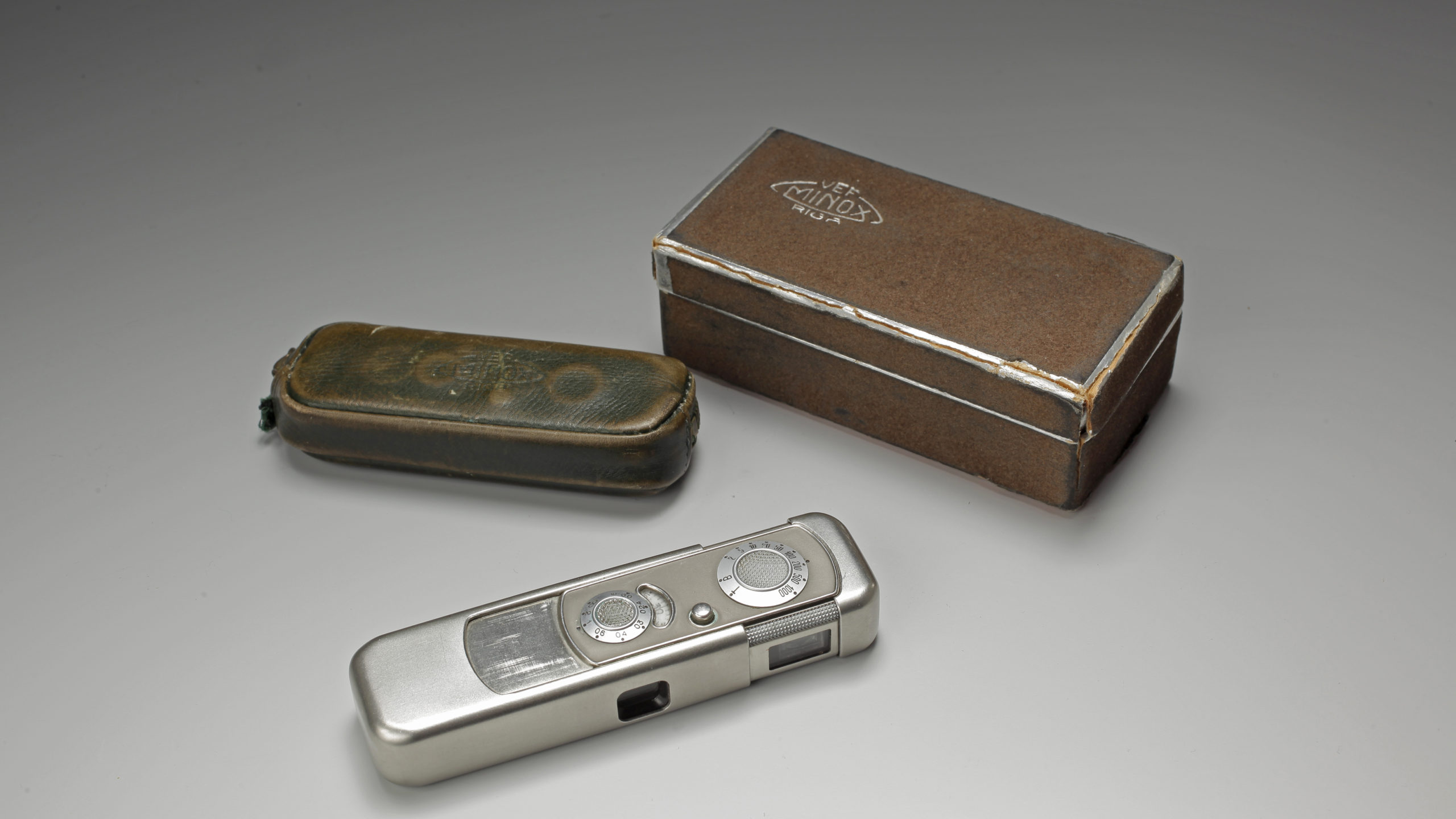Miniature cameras
The race to reduce the size of photography equipment continued, giving rise to the appearance of ever-smaller cameras: the Minox was created in 1937 and the Tessina in 1960.
Invented by Walter Zapp, the Minox was produced from 1937 in Riga, Latvia. It takes 8×11 mm shots on 9.5 mm film. Although it was disrupted during the Second World War, Minox production resumed in 1947 in Wetzlar, Germany, where the camera is still made today.
As for the Tessina, it was made from 1960 by Siegrist & Co. S.A., a Swiss company specialising in watchmaking parts. It was created as a joint effort by Rudolf Steineck, the inventor, and Paul Nagel, who built it. It takes 14×21 mm images on standard 35 mm film housed in a special cartridge. This was an advantage compared to other miniature cameras, which used smaller format films that were more difficult to obtain. The film unrolls horizontally so that it can fit into a camera this small. The image is therefore conveyed using a mirror reflecting light at a 90-degree angle.
The very small size and the efficiency of both these cameras soon attracted the attention of intelligence services wanting to use them for spying.


